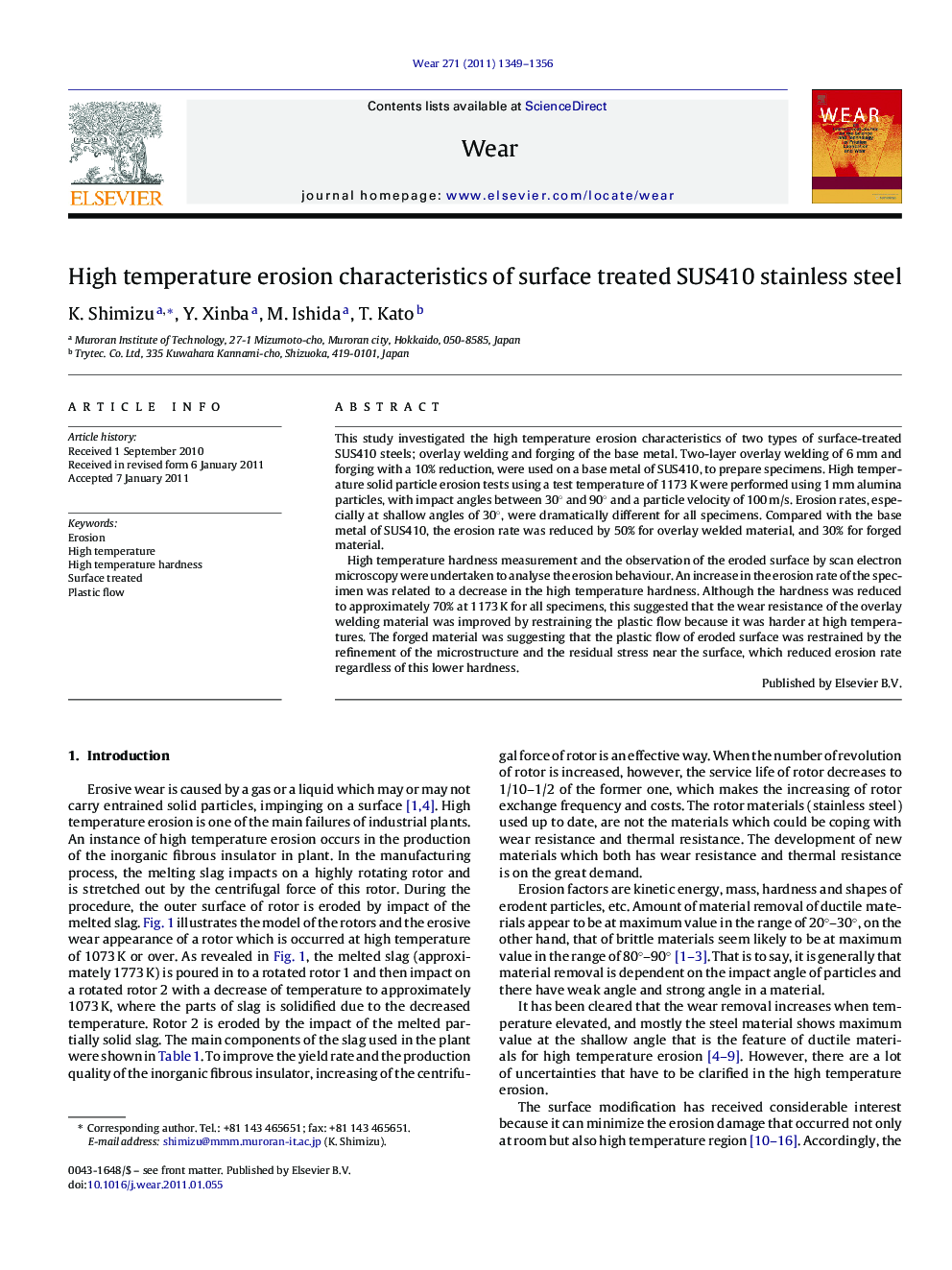| Article ID | Journal | Published Year | Pages | File Type |
|---|---|---|---|---|
| 618168 | Wear | 2011 | 8 Pages |
This study investigated the high temperature erosion characteristics of two types of surface-treated SUS410 steels; overlay welding and forging of the base metal. Two-layer overlay welding of 6 mm and forging with a 10% reduction, were used on a base metal of SUS410, to prepare specimens. High temperature solid particle erosion tests using a test temperature of 1173 K were performed using 1 mm alumina particles, with impact angles between 30° and 90° and a particle velocity of 100 m/s. Erosion rates, especially at shallow angles of 30°, were dramatically different for all specimens. Compared with the base metal of SUS410, the erosion rate was reduced by 50% for overlay welded material, and 30% for forged material.High temperature hardness measurement and the observation of the eroded surface by scan electron microscopy were undertaken to analyse the erosion behaviour. An increase in the erosion rate of the specimen was related to a decrease in the high temperature hardness. Although the hardness was reduced to approximately 70% at 1173 K for all specimens, this suggested that the wear resistance of the overlay welding material was improved by restraining the plastic flow because it was harder at high temperatures. The forged material was suggesting that the plastic flow of eroded surface was restrained by the refinement of the microstructure and the residual stress near the surface, which reduced erosion rate regardless of this lower hardness.
► High temperature erosion of overlay welding and forging of SUS410 steels was investigated. ► Erosion rate at 30̊ was reduced by 50% for welded material and 30% for forged material. ► Vickers hardness was decreased to approximately 70% at 1173 K for materials. ► Higher wear resistance of welded material was related to the harder hardness at high temperatures. ► Wear removal of forged material was restrained by the refinement of matrix and residual stress.
